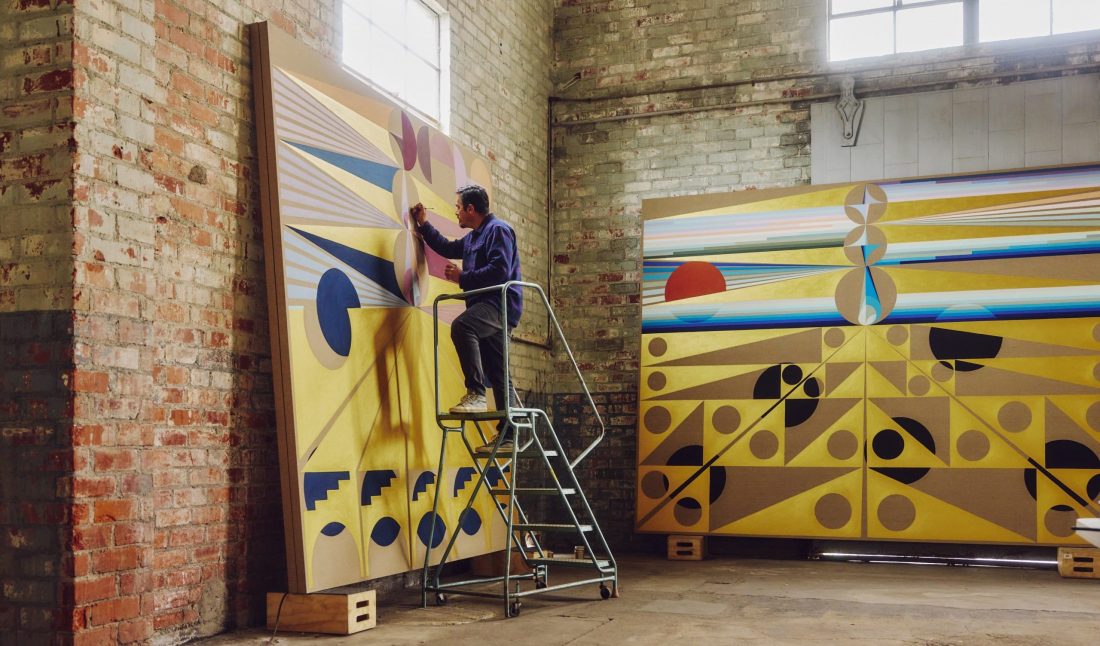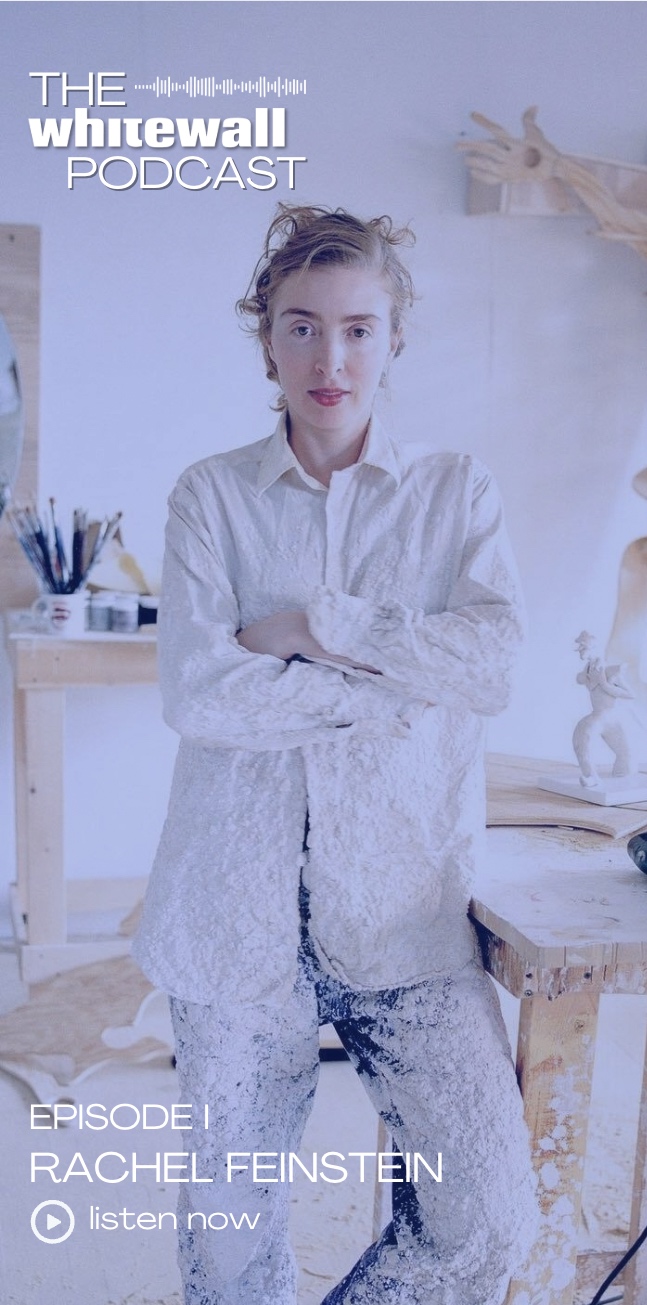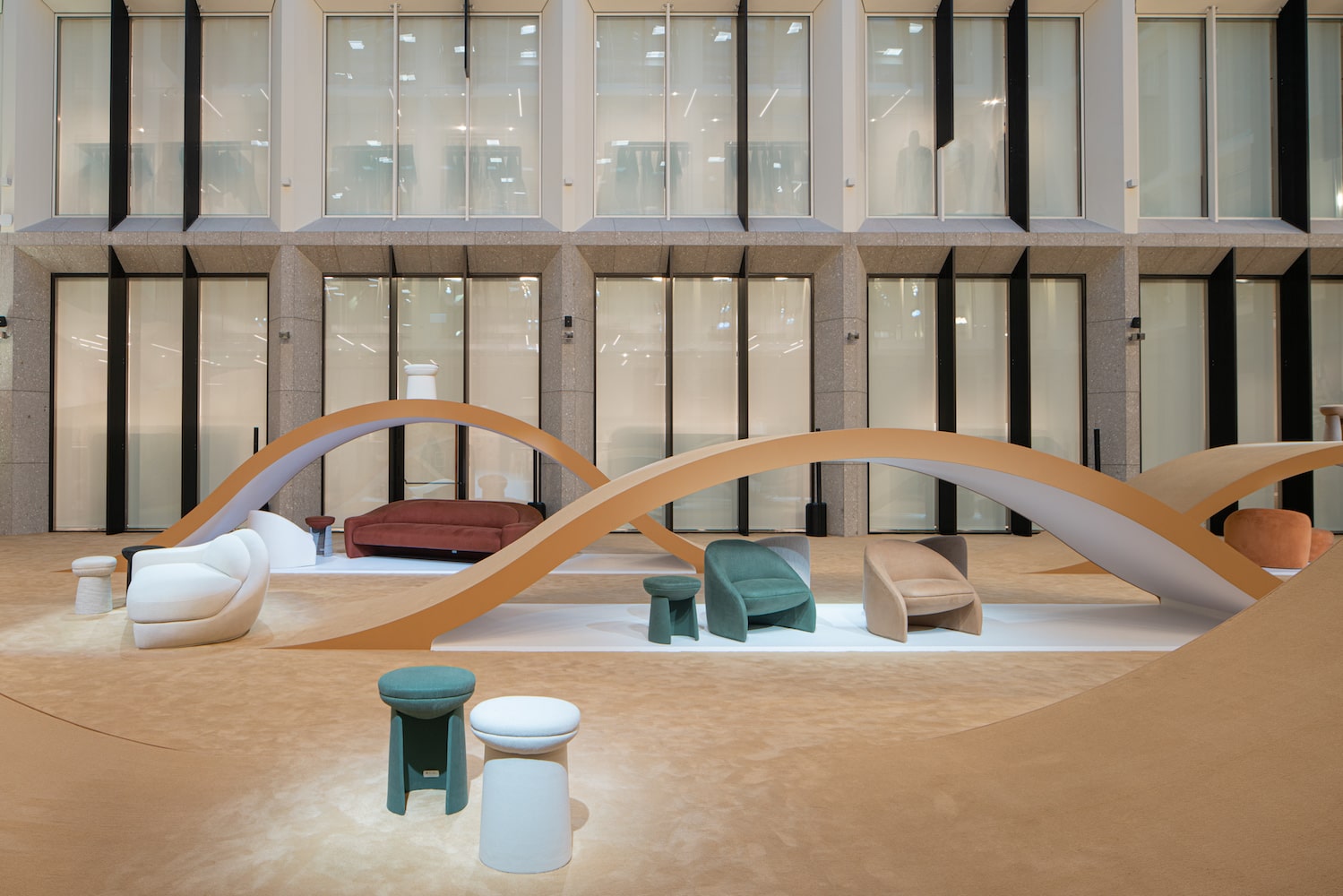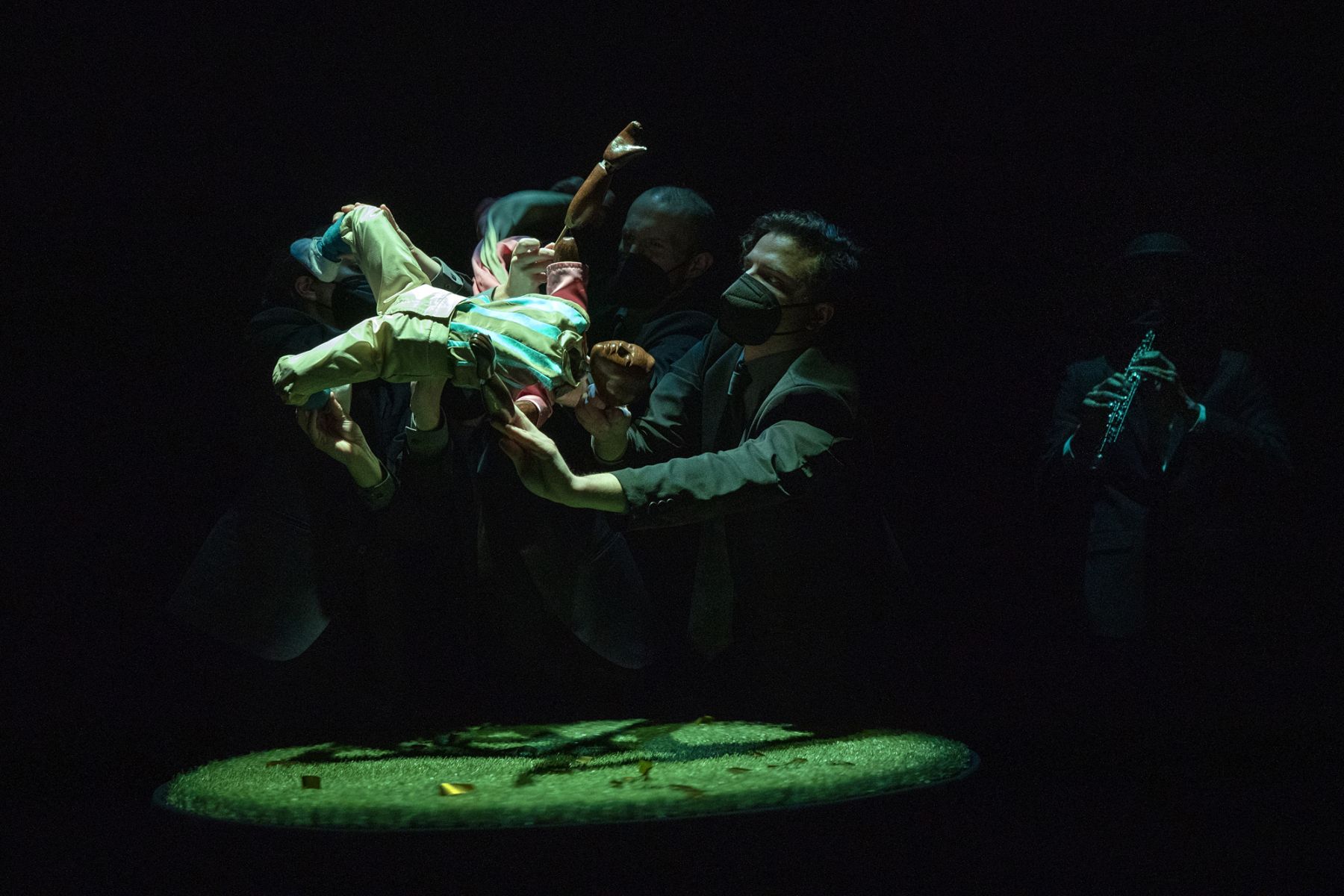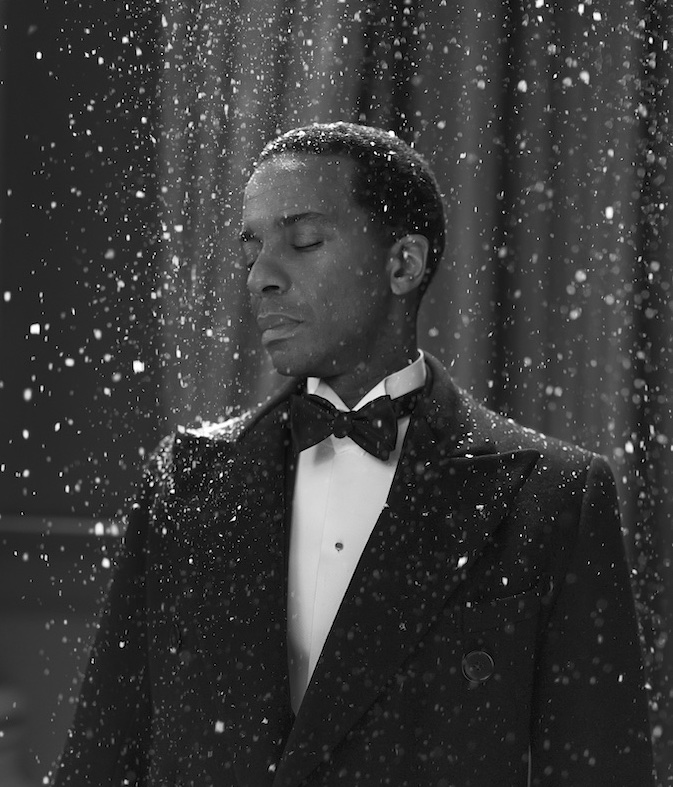Last May at Frieze New York, James Cohan Gallery presented a solo booth of paintings by the artist Eamon Ore-Giron. These abstract, geometric works shimmered in gold, with rays of blue, orbs of black, and teardrops in peach radiating from the center. Dancing with symmetry but never quite achieving it, they feel both futuristic and of a time gone by. All made over the past two years, they are part of the Los Angeles–based artist’s “Infinite Regress” series, started in 2015. He sees the series as a conversation, with one painting building off the next, exploring a dialogue between color, form, and depth, as well as past and present.
The compositions and connections forged in “Infinite Regress” stem from research into the roots of abstraction outside the Western art-historical canon. Ore-Giron told Whitewall recently that as a Peruvian he was never taught his people “had anything to offer the contemporary art world.” Not buying that narrative, he looked southward and found a rich visual record to pull from.
With a creative practice that includes video and music as well, Ore-Giron spoke with Whitewall about finding liberation and freedom within a set of parameters that embraces the constant of our histories.
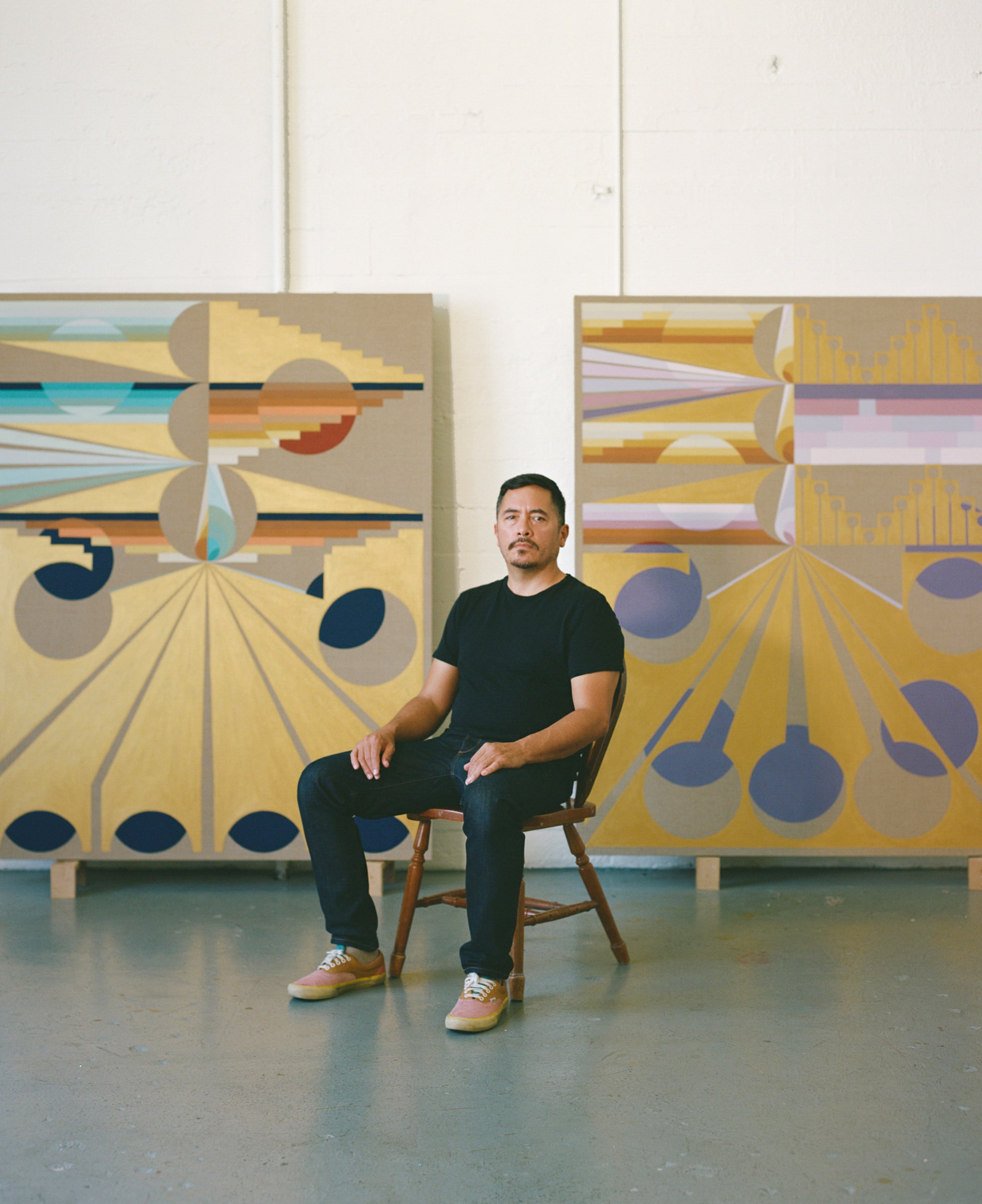 Eamon Ore-Giron, courtesy of the artist.
Eamon Ore-Giron, courtesy of the artist.
WHITEWALL: “Infinite Regress” is a series you’ve been working on since 2015. How has the series evolved over the past seven or so years? What’s it like to see that evolution?
EAMON ORE-GIRON: I enjoy looking back at the early works and pulling from them to help inform the newer pieces. My practice, as a whole, is very wide-ranging, including video, music, and painting, so this series has given me a moment to reflect on working within limitations, which has been a very rewarding experience. It’s like a relationship that takes time to develop and when it grows you know it and you feel it. The early works in the series make use of simpler forms and are playing with the idea of motif and flatness. In contrast, in the later works I find myself getting into more complex color relationships and architectural forms, alluding to a deeper space within the picture plane of the linen.
WW: The work began in response to a period of time where you experienced both a new beginning and a great personal loss, within a month of each other. How do you see these paintings as a look at both the future and the past?
EOG: I have recently been drawn to the idea that the past is never over; it is constantly with us and runs through us. This idea can either be stifling or empowering, depending on what you do with it. I chose the empowering path. I look into the forms from the past that I have inherited as a Brown artist and in that way, I am collaborating with the past within this lineage of form and color. By looking at early Andean masterworks and paying attention to the spatial sensibilities in these pieces I can chart my own course and create my own unique relationship to space, color, and material. This temporal simultaneity is where the urge to create resides. These paintings are a reflection of this simultaneity, allowing the past to have a voice in my creative process.
WW: Years later, what keeps you returning to this series?
EOG: Working on a series is like constructing a language, building toward a visual syntax, and as the works evolve, so too does the phrasing and conversation. It’s like seeing a good friend and talking, arguing, laughing, and falling back in love. Ideally, they function in my life as a mode of liberation, an expression of freedom. I can create a space inwhich to control the parameters of form and concept, but as much as it’s mine, I always have to let the works go out into the world and have their own lives and create dialogue with other artists and audiences on their own. It’s a method that teaches you how to work within limitations. It reminds me of composing with a drum machine; the overall parameters are all the same, they don’t change, but the possible combinations of notes, tones, and velocity are endless.
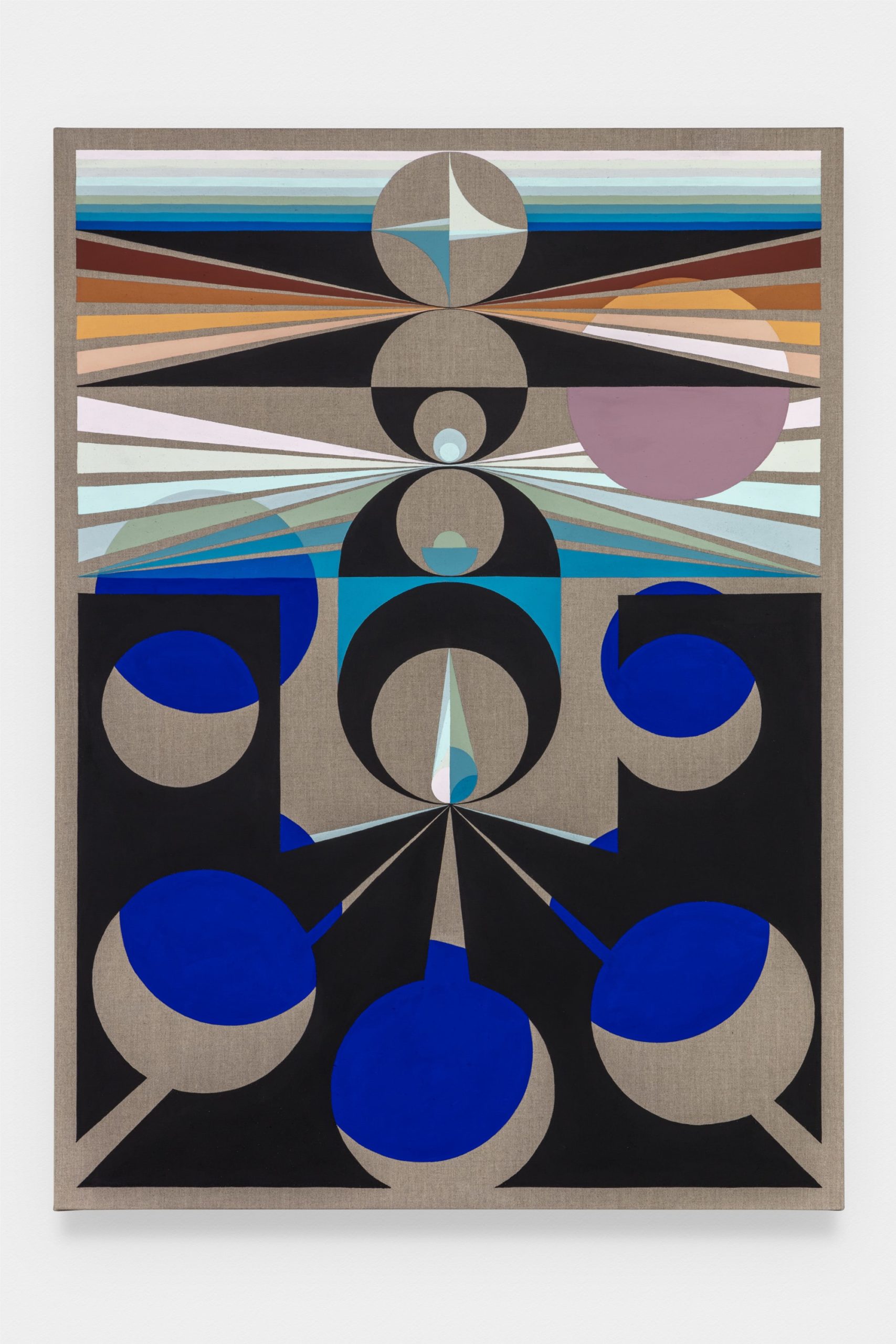 Eamon Ore-Giron, “Black Medallion VIII,” 2022, photo by Charles White, courtesy of the artist and
James Cohan Gallery.
Eamon Ore-Giron, “Black Medallion VIII,” 2022, photo by Charles White, courtesy of the artist and
James Cohan Gallery.
WW: You’ve said that initially you were drawn to gold aesthetically, and then later connected the color to its history in ritual objects of Peru and South America. How did you first encounter that history?
EOG: For a long time, I had been circling around ideas of historical memory in my work and the ways in which this memory resides in objects and materials. This idea that the past never ends is a notion that also affects how I read the color gold and the way it functions in my work. As a Peruvian I have always been familiar with our beautiful yet troubled history with gold and our objects, so it felt natural to connect these paintings to that history. When we see our gold objects in museums, they are lonely survivors. The vast majority of our creations were stolen and melted down, so in some ways, I am creating an addendum to our history of gold work—a prosthetic limb of sorts for our amputated history.
WW: How did that influence your approach to painting? The ritual aspect of your practice?
EOG: It made the act of painting have a function in my life. It gave me a place to put all these feelings and ideas.
WW: Do you see these paintings as both celestial and terrestrial?
EOG: Yes, in the sense that celestial and terrestrial are about positioning. These paintings are like maps to my positioning, where I stand, and what direction I’m facing. We create our understanding of the world through the positioning of our perspective, and that perspective is constantly in flux. The constellations are not permanent—they are slowly expanding and so are we.
WW: How are you thinking of symmetry, balance, and harmony in your paintings?
EOG: I am more interested in something alluding to symmetry, but not actually attaining it. I am thinking less about balance and more about symbiosis, one object not being able to live without the other. I do like the reflective power of the works in this series, and I think that the geometry allows for the viewer to pause and think about what is being communicated in the works without it being said. In that way, I guess it’s more like transmitting a feeling rather than something mediated by intellect, which is fine, too, but maybe after experiencing the feelings first.
WW: You’ve said that these paintings decolonize abstraction. Once you arrived at this understanding of the roots of abstraction outside of what you’d been taught, how did that change your relationship to the work? To abstraction?
EOG: Nothing changed my relationship with the work; rather, the work is a reflection of my lived experience. In 1998 I went to Huancayo, Peru,and worked with an amazing painter named Josue Sánchez Cerrón. This experience allowed me to probe deeper into ideas of art outside of the Western canon and the ways art can function outside of the contemporary art world. This experience led me to think of creating a practice that is looking inward and one that speaks to a different audience. I think of the idea of decolonizing as a personal quest, one that involves breaking the ideas of hierarchy that traditional art education instilled in me. I was never taught that my people had anything to offer the contemporary art world; everything important came from the U.S. and Europe. I refused to believe that, so I went South.
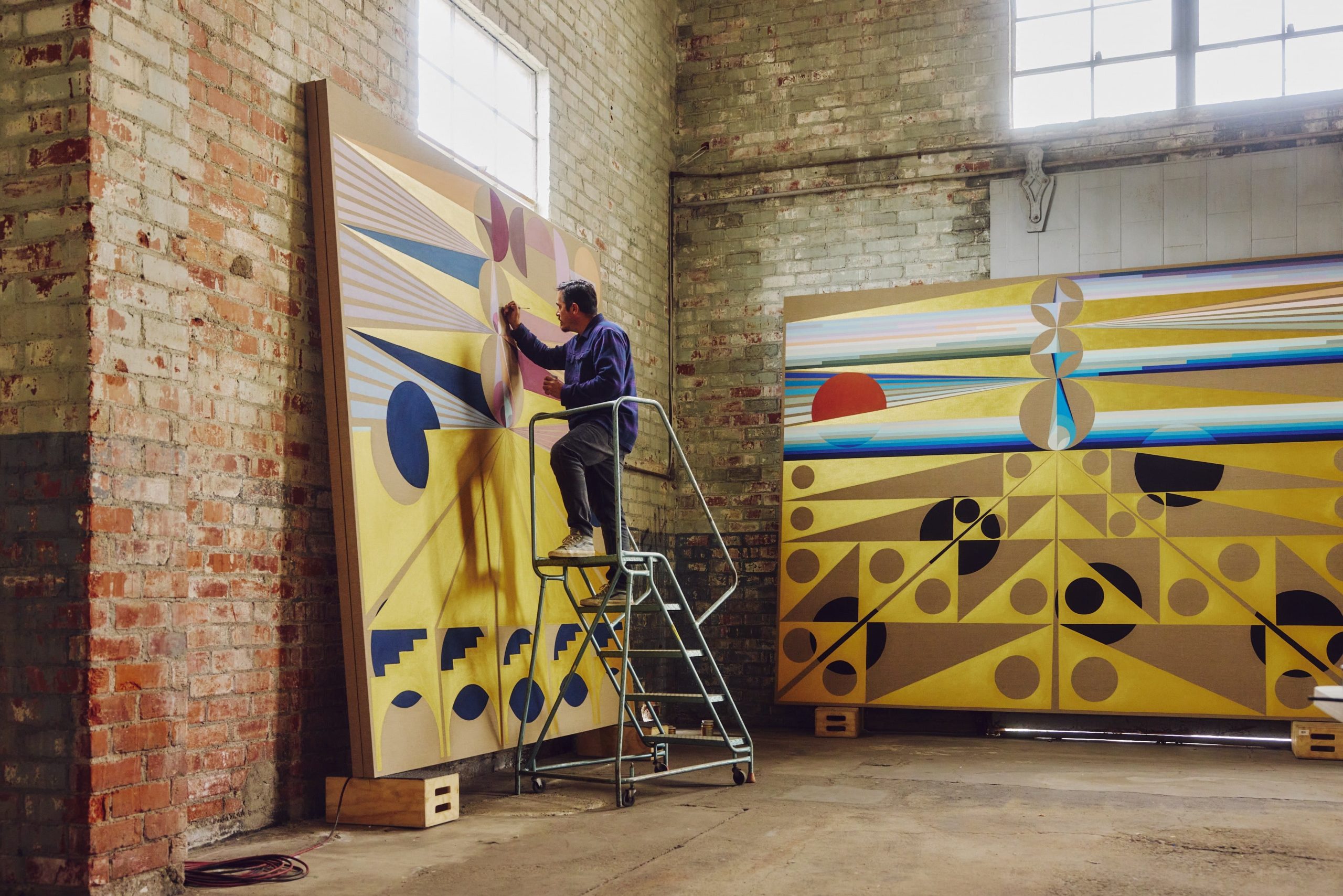 Eamon Ore-Giron in his studio, photo by Emiliano Granado, courtesy of the artist.
Eamon Ore-Giron in his studio, photo by Emiliano Granado, courtesy of the artist.
WW: You said when embarking on this more graphic approach, you were exploring how your identity could be reflected in color and arrangementof space and shapes. Given that, what colors have you been drawn to
lately?
EOG: Mauve and deep blue fading into rust red brown. Marine layer creeping across the Southern California skyline hitting the dusty brown hillsides.
WW: Can you tell us about the motifs we see in these works? The circle, the teardrop, the half-moon, the stairs?
EOG: Stairs are a connection to the subterranean, a passage from one world to another, transformation. The teardrop shape is symmetrical both physically and emotionally; often when you cry it’s probably because someone else is crying. The teardrop can also be a flame, burning in the center, radiating light throughout the painting like an offering on an altar. The circles and half-moons are a reminder of place.
WW: You described the keyhole structure of the paintings, the orbs passing through them, as ringing across them sonically. How do you see these paintings in relation to sound?
EOG: Sometimes I like to imagine the orbs as marbles rolling across mallets of some kind, like a xylophone. Randomized tones that ring out as the orbs encounter each other and pass over the gold keyholes. The keyholes are also like punctures where these planetary orbs peek in and out, like a full moon moving across a golden fence.
WW: You are an artist and musician. How do you see your practice as both related to each other?
EOG: They are both ways of composing that involve intersecting elements; a circle intersects a series of rays, and its colors change in this encounter in the same way notes tumble into one another, creating a composition. As a musician, I find myself moving more and more into the realm of an open interpretation of sound. Maybe the pandemic changed me, but I am more aware of the space between phrases, pauses, and the sounds that reside in that space. I think being an artist has informed this sensibility to sound by making me more aware of spatial relationships and the importance of negative/open space, which is how I see the raw linen and canvas in my work.
WW: How did you choose to paint on raw brown linen?
EOG: I never felt comfortable on a clean white gessoed surface. I like the relationship my work has to textile and abstraction rooted in the warp and weft of the Americas.
WW: You’ve said, through music, rather than getting people to dance, you’re interested in making connections. How in art and music are you hoping your viewers/listeners make connections?
EOG: The people that like my music tend to understand where I’m coming from, so I don’t think it’s hard for them to make the connections that I’m referring to. As for the greater audience out there, I guess I would hope that they do the research and think about the bigger ideas in my music and art—ideas around hybridity and transformation. Don’t get me wrong, I like when people dance, but I know I’m doing my job when people walk away with something empowering, like a connection to a new way of seeing and listening.
WW: You’ve said that you see music as a way to dig through the past. What past are you digging through at the moment, musically?
EOG: I have been listening to a lot of Uruguayan music from the sixties/ seventies. Specifically, the musician Eduardo Mateo and the band he created called El Kinto. I have also been listening to Andean huayno music, especially an amazing Aymara musician named Luzmila Carpio. Her 1981 album Sumaj Llajta is a masterpiece.
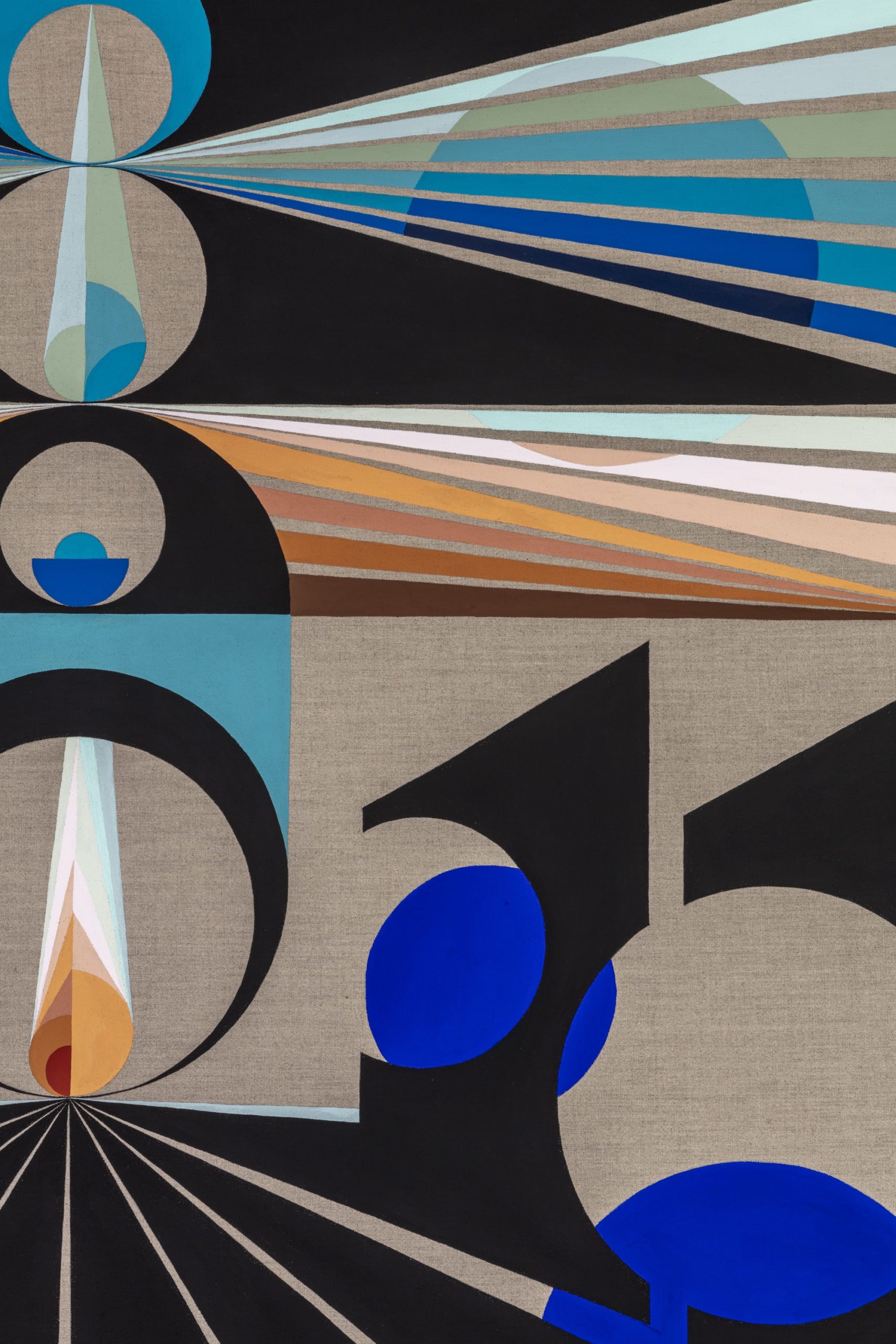 Eamon Ore-Giron, “Black Medallion VI” (detail), 2022, photo by Charles White, courtesy of the artist and James Cohan Gallery.
Eamon Ore-Giron, “Black Medallion VI” (detail), 2022, photo by Charles White, courtesy of the artist and James Cohan Gallery.







